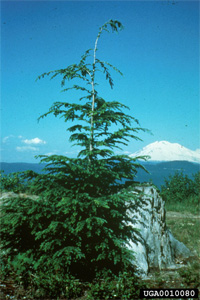|
Although there are many ways to classify ecosystems, we will only cover a few common approaches here.
One of the most common ways to classify ecosystems is to use a climatic classification such as ecoclimate zones (Bailey 1988).
This method of classification is widely used and defines patterns of world climate.
Examples of eco regions include Temperate semi-arid and temperate continental regions.
Another common approach to classifying ecosystems is to use vegetation types or
biomes (Tallis 1991).
This approach works well at the macro- and meso-level.
Included in this type of classification would be life zones and plant community types.
Examples of biomes include coniferous forests and tundra.
Another common approach to classifying ecosystems is using physiography.
Physiography is the configuration of the earth’s surface and the associated substance or parent material.
The term physiography is short for physical geography.
Physiography is a useful classification for ecosystems at any scale.

Thomas D. Landis, USDA Forest Service, www.forestryimages.org
Additional Information:
Ecoregions of the United States
Biomes of the world
Physiography, and a map of Earth's Regions
|
